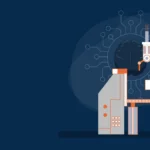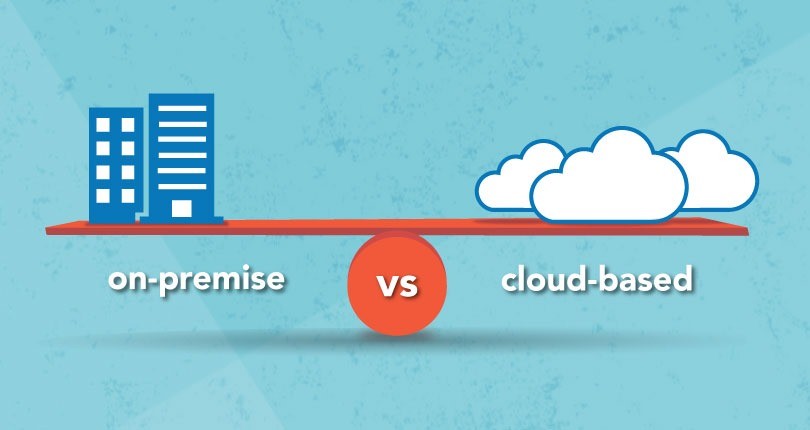IT infrastructure is the backbone of operations in today’s fast-paced business environment. However, ensuring these systems run smoothly can be challenging, particularly given the increasing complexity of technology and user demands. Traditional IT management methods, such as reactive troubleshooting and scheduled maintenance, often result in unexpected downtimes and costly repairs. This is where predictive maintenance comes in.
By leveraging sophisticated data analysis and ongoing monitoring, predictive maintenance allows IT teams to detect possible problems before they cause interruptions.This proactive approach helps businesses reduce downtime, minimize operational costs, and enhance system performance. Maintaining a proactive IT infrastructure becomes increasingly crucial as organizations continue to grow and scale. Predictive maintenance ensures systems remain efficient, secure, and ready for the future. Connect with Managed IT Services Houston experts to discover how predictive maintenance can enhance your IT infrastructure, minimize downtime, and ensure your systems remain secure and future-ready.
In this blog, we will explore predictive maintenance, the importance of IT infrastructure management, and the role of enhancing and strengthening IT operations.
What is Predictive Maintenance?
Predictive maintenance is a way to manage equipment that aims to prevent problems before they happen. It uses data, sensors, and machine learning to identify potential failures. By continuously monitoring the health of IT infrastructure and recognizing early signs of issues, predictive maintenance allows IT teams to address problems before they lead to costly downtime or system failures. This approach helps optimize performance, extend asset life, and reduce maintenance costs.
Importance of Proactive IT Infrastructure Management
Proactive IT infrastructure management is about avoiding potential problems before they disrupt operations. Instead of waiting for failures, it focuses on maintaining and improving systems to ensure continuous performance. Here’s why it’s important:
- Reduces System Interruptions: By identifying and addressing issues early, IT teams can prevent disruptions that can halt business operations. Reducing system interruptions is essential for maintaining productivity and customer satisfaction.
- Boosts Efficiency: Regular monitoring and maintenance help optimize the performance of IT systems, making them more efficient and responsive.
- Improves Security: Proactive measures ensure that vulnerabilities are patched before cyber threats can exploit them.
- Supports Scalability: As businesses grow, so does the complexity of their IT systems. Proactive management ensures infrastructure can scale without running into performance bottlenecks.
In short, proactive IT management is essential for maintaining a stable, secure, and efficient IT environment that supports business growth and success.
Role of Predictive Maintenance in Enhancing IT Infrastructure Management
Predictive maintenance helps businesses keep their IT systems healthy, stable, and ready for the future. IT teams look at systems and data when it arrives. This allows them to find problems soon and repair them before they become large. This approach is not just about avoiding system crashes. It’s about making more intelligent decisions, saving money, and building a strong foundation for growth. Here is the role of predictive maintenance that helps in different areas of IT infrastructure management.
-
Early Detection of Potential Failures
One of predictive maintenance’s most essential roles is identifying problems before they become system failures. It monitors your servers, networks, and applications to spot anything unusual, like a server running too hot or a storage device slowing down.
- IT teams get early alerts before a system breaks down.
- Fixing issues early prevents costly downtime.
- It reduces the risk of bigger damage by acting fast.
This early detection gives your team time to act before users notice a problem.
-
Optimized Resource Allocation
Knowing which systems have problems or are working well can help you better use your team’s time and your company’s money. Predictive maintenance lets you decide what is most important. It helps your team use their time to repair the correct problems when they happen.
- Technicians spend time fixing real issues, not guessing.
- You avoid wasting money on unnecessary part replacements.
- IT staff can plan to work more effectively.
Instead of maintaining all systems equally on a fixed schedule, you focus only on what needs care, making your operations more efficient.
-
Reducing Operational Costs
Emergency repairs are usually expensive. A sudden failure can require rush orders, overtime labor, or even full system replacements. Predictive maintenance helps reduce these surprise expenses.
- Maintenance is done at the right time, not too early, not too late.
- You avoid significant damage that comes with ignored issues.
- Downtime costs are reduced because problems are prevented.
By fixing problems early, businesses can save thousands of dollars yearly in repair costs, lost productivity, and service interruptions.
-
Improved System Performance
When systems are well-maintained, they run faster and smoother. Predictive maintenance helps keep hardware and applications in top shape.
- Servers stay cool and operate more efficiently.
- Network equipment delivers better connection speeds.
- Applications run with fewer errors or slowdowns.
Performance issues are often signs of deeper problems. By addressing them early, predictive maintenance helps avoid bigger disruptions and keeps end-users satisfied.
-
Enhancing Data Security and Compliance
A slow system or failing hardware affects performance and can open doors to security risks. Predictive maintenance protects sensitive information and meets compliance standards.
- Detects abnormal system behavior that might indicate a threat.
- It helps avoid data loss by maintaining stable backup systems.
- Supports compliance by keeping systems within required performance limits.
By keeping your infrastructure stable, you’re also keeping it secure. You avoid gaps that attackers could exploit and better prepare for audits.
-
Minimized Downtime and Disruption
Every business wants to avoid system downtime, but not all downtime is avoidable unless you’re prepared. Predictive maintenance helps reduce these disruptions to a minimum.
- Problems are fixed before they stop systems from working.
- Maintenance can be scheduled during low-usage times.
- IT teams stay ahead of outages, so users experience fewer issues.
With fewer unexpected problems, your teams can keep working without interruptions, and your customers will notice the difference.
-
Data-Driven Decision Making
Predictive maintenance tools do more than prevent breakdowns, they also gather valuable data over time. This information provides a clearer picture of how your IT systems are performing and where improvements are needed.
- Track trends in system performance and usage patterns.
- Predict when specific equipment is likely to fail based on historical data.
- Schedule upgrades or replacements based on actual condition, not just age.
With this insight, IT managers and business leaders can make smarter, well-informed decisions about where to invest time and money to strengthen their infrastructure.
-
Enabling Scalable IT Infrastructure
As your business grows, your IT systems need to grow with it. Predictive maintenance helps you build infrastructure that can scale smoothly without hitting unexpected roadblocks.
- It helps you plan for growth by spotting system strain early.
- Reduces the risk of failure during expansion or upgrades.
- Keeps performance consistent, even as demands increase.
Scalability isn’t just about adding more hardware; it’s about ensuring everything works well together, now and in the future. Predictive maintenance lays that groundwork.
Final Thoughts
Predictive maintenance is a crucial aspect of proactive IT infrastructure management. By using data-driven insights and advanced analytics, businesses can anticipate potential issues before they escalate, which helps minimize downtime and avoid costly repairs. This approach ensures smoother operations, extends the lifespan of essential IT assets, improves productivity, and enhances overall system reliability. As organizations become more dependent on technology, adopting predictive maintenance is a strategic move that boosts efficiency, reduces risks, and supports long-term business success. For more support, contact the IT Support Houston team.










